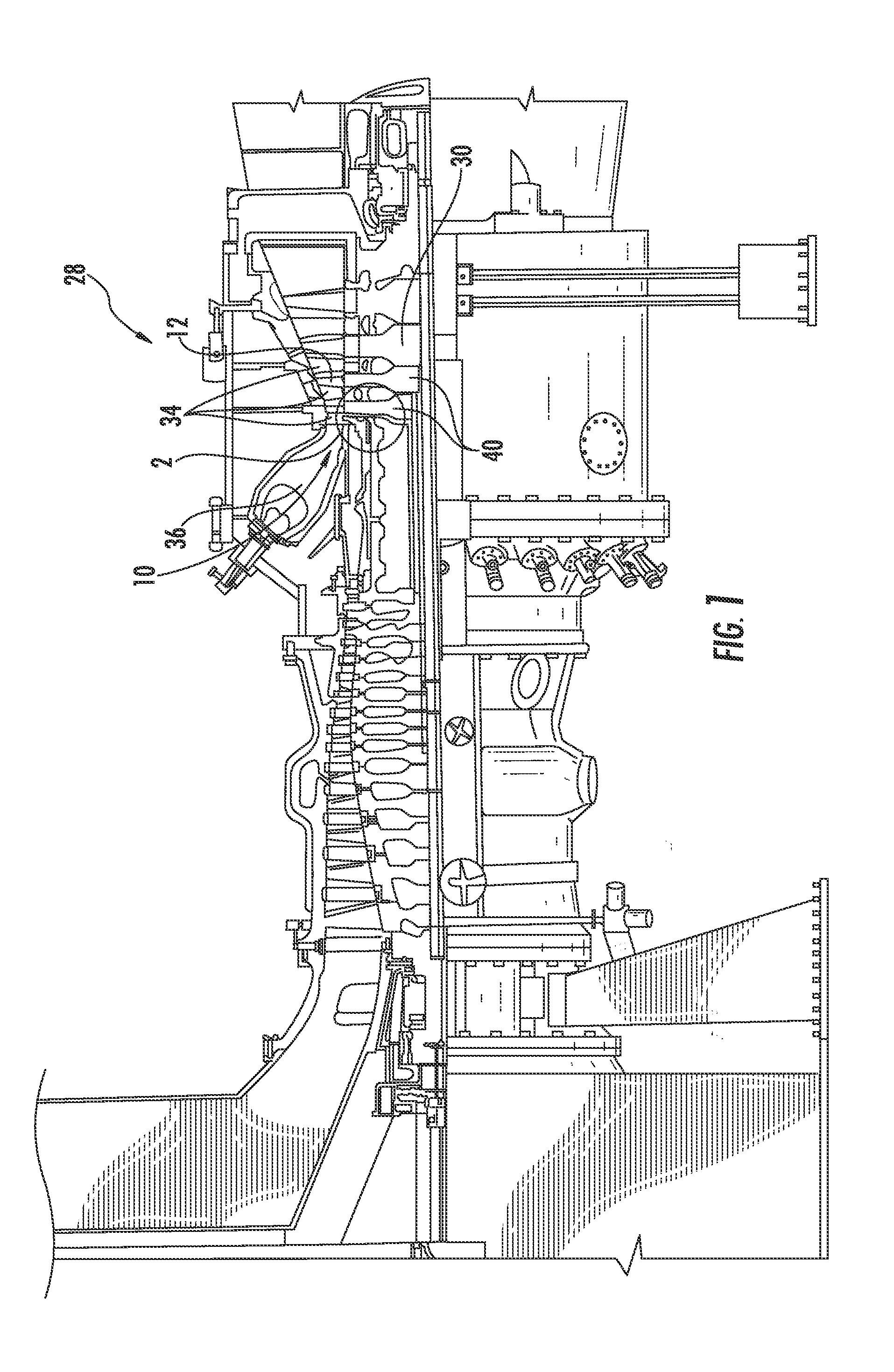Wire seal for metering of turbine blade cooling fluids
a cooling fluid and turbine blade technology, applied in the direction of liquid fuel engine components, non-positive displacement fluid engines, pump components, etc., can solve the problems of negative effect on the efficiency of the turbine engine, achieve the effect of effective metering of cooling fluid flow, improve overall engine performance, and reduce leakage flow
- Summary
- Abstract
- Description
- Claims
- Application Information
AI Technical Summary
Benefits of technology
Problems solved by technology
Method used
Image
Examples
Embodiment Construction
[0016]As shown in FIGS. 1-3, this invention is directed to a cooling fluid metering system 10 for a turbine blade 12 of a gas turbine engine 28. The cooling fluid metering system 10 may include a cooling channel 14 positioned between a root 16 of a turbine blade 12 and an offset rotor sealing plate 20 for supplying cooling fluids to turbine blades 12. At one point, a portion of the cooling channel 14 may include a gap 22 between the root 16 and the offset rotor sealing plate 20. The gap 22 may be sealed with teardrop shaped seal 24 positioned within a teardrop shaped cavity 26 at the gap 22. The cavity 26 and seal 24 may be positioned such that during operation, the seal 24 is forced radially outward and into the gap 22, thereby effectively metering cooling fluid flow, which may be, but is not limited to, cooling air, through the cooling channel 14. By metering the cooling fluid flow through the cooling channel 14, the amount of leakage flow can be reduced, thereby improving the ove...
PUM
 Login to View More
Login to View More Abstract
Description
Claims
Application Information
 Login to View More
Login to View More - R&D
- Intellectual Property
- Life Sciences
- Materials
- Tech Scout
- Unparalleled Data Quality
- Higher Quality Content
- 60% Fewer Hallucinations
Browse by: Latest US Patents, China's latest patents, Technical Efficacy Thesaurus, Application Domain, Technology Topic, Popular Technical Reports.
© 2025 PatSnap. All rights reserved.Legal|Privacy policy|Modern Slavery Act Transparency Statement|Sitemap|About US| Contact US: help@patsnap.com



